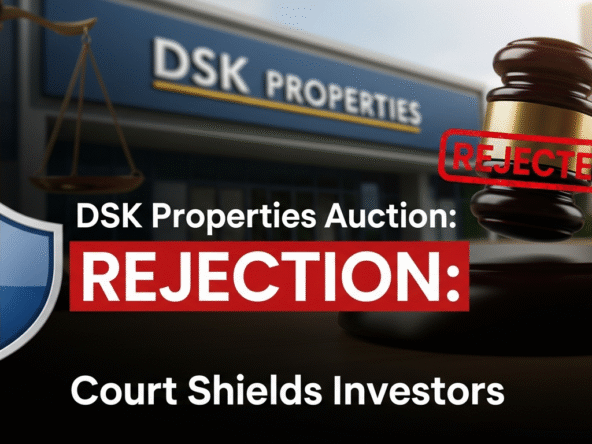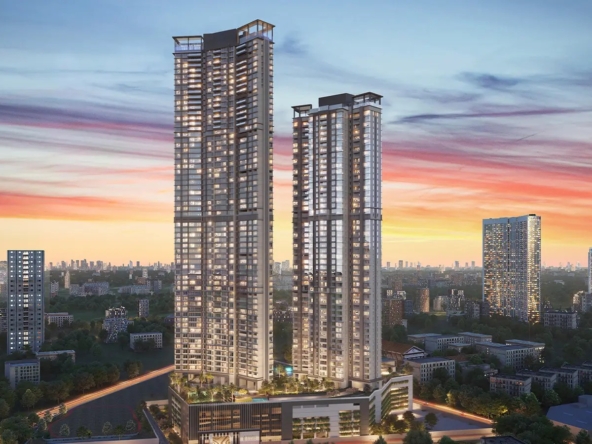Mumbai, India’s financial capital, faces unique challenges with its limited land and aging buildings. Many structures, over 50 years old, are unsafe or lack modern amenities. Redevelopment is a vital solution, transforming old buildings into modern, safe homes while maximizing land use. This guide explains the Mumbai Panel Zone Building Redevelopment Pending, its steps, risks, challenges, and an alternative called self-redevelopment.
What is Building Redevelopment?
Building redevelopment involves demolishing an old building and constructing a new one on the same plot. In Mumbai, this is crucial due to high population density and aging infrastructure. Redevelopment upgrades living conditions, adds amenities like parking and security, and uses incentives like increased Floor Space Index (FSI) to make projects viable.
The Redevelopment Process
The process is complex, typically taking 4–5 years. Here are the key steps:
- Initiating the Journey
- Surveys assess the building’s condition and resident interest.
- A Special General Body Meeting (SGBM) discusses the proposal, requiring 66.67% resident approval.
- Consultants may address concerns to build consensus.
- Planning for the Future
- Feasibility studies evaluate structural integrity, financial viability, FSI, and Transferable Development Rights (TDR).
- Cost estimations cover construction, architects, consultants, approvals, and resident relocation.
- Amenities like parking and recreational areas are planned, ensuring compliance with MHADA (MHADA) and MCGM regulations.
- Assembling the Team
- Architects design the new building, structural engineers ensure safety, and consultants handle approvals.
- Residents may hire a developer for efficiency (Choosing a Developer).
- Conquering the Bureaucracy
- Clearances are needed from MHADA (for self-redevelopment) and MCGM for construction, demolition, and occupancy.
- Detailed plans and compliance with building codes are essential.
- Choosing Your Path
- Options include self-redevelopment (society-managed) or builder-led redevelopment.
- Builders require a clear contract and adherence to 79a regulations.
- Self-redevelopment needs expertise but offers more control (Self-Redevelopment Guide).
- From Blueprint to Reality
- Construction involves quality control, inspections, and high-quality materials.
- Transparent communication keeps residents informed.
- Home Sweet (New) Home!
- Final inspections verify structural integrity, electrical systems, and plumbing.
- An Occupancy Certificate (OC) from MCGM is obtained.
- The building is handed over with documentation and amenities access.
Risks and Challenges
Redevelopment projects face several hurdles, as outlined in a 2024 study (Risks and Challenges).
Risks
| Category | Key Factor | Remark |
|---|---|---|
| Both Parties | FSI changes due to DCR | Include FSI distribution clause. |
| Flats not matching committed area | Compensation clause for area discrepancies. | |
| Tenants | Developer delays proposal | Security deposit of Rs.1.5 crore for 20 tenants. |
| Developer abandons project | Bank guarantee = 1.5x construction cost. | |
| Developers | Tenant delay in vacating | Strict penalty clause in Development Agreement (DA). |
| Rising costs (TDR, premiums) | Approval delays increase costs. |
Challenges
| Category | Key Factor | Remark |
|---|---|---|
| Both Parties | Dilapidated building | Structural audit required. |
| Sustaining tenant coherency | Transparency and communication are key. | |
| Tenants | Non-feasible project post-selection | Revisit DA if needed. |
| Developer financial issues | Due diligence to avoid delays. | |
| Developers | Material shortages | Use alternate materials with expert advice. |
| Challenging site conditions | Pre-bid surveys to address issues. |
Uncertainties
- Market fluctuations, delays in Development Plans (DP), and DCR changes.
- Defective plot titles, non-cooperative members, and non-performing developers.
- Regulatory shifts, including NOCs and court orders.
Project Phases and Durations
| Phase | Duration | Risk Level |
|---|---|---|
| Initial Preparation | 2–3 months | Very High |
| Feasibility | 2–4 months | Very High |
| Tendering | 6–8 months | High |
| Pre-execution | 8–10 months | Medium |
| Construction | 27–59 months | Moderate |
Self-Redevelopment: An Alternative Approach
Self-redevelopment allows housing societies to manage the process without developers, hiring architects and contractors directly (Self-Redevelopment).
Benefits
- Profits stay with the society.
- No risk of fraud, delays, or FSI loss.
- Higher carpet area for members.
- Equal profit distribution.
Government Support
- In 2019, Maharashtra sanctioned Rs.780 crore for 19 societies.
- Mumbai Bank offers Rs.50 crore loans per project.
Legal Documents Required
- Society registration certificate
- Conveyance deed (mandatory)
- Sale deed
- Title certificate
- Certified property card
- Original building plan
- Structural audit report
- Redevelopment agreement
- New approved plan
- Flat-wise carpet area list
- DP remark
- Electricity and water bills
Conclusion
Mumbai’s building redevelopment process is a transformative solution for aging infrastructure. By following the outlined steps, addressing risks, and considering self-redevelopment, residents can achieve modern, safe homes. Careful planning and regulatory compliance are essential for success.





